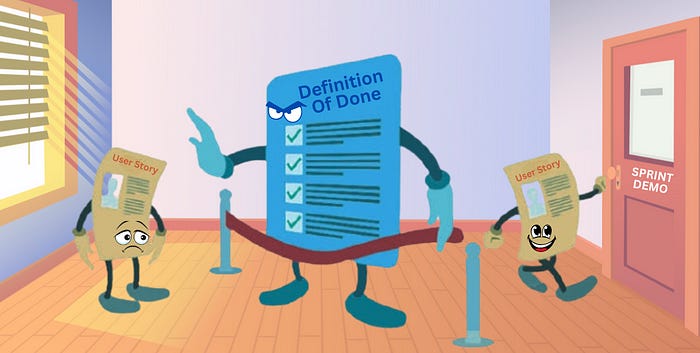Definition of Done, Definition of Ready and Acceptance Criteria are not the same darn thing
Discover the distinct roles of DoD, DoR, and AC, and learn how they ensure quality, clarity, and consistency in software development
In software development, quality is not a destination but a continuous journey. As an Agile practitioner, I’ve witnessed firsthand how the Definition of Done (DoD) can be the critical difference between successful product delivery and a cascade of technical complications. Sadly, most of the teams underestimate its critical role in delivering consistent, high-value increments.
Before we proceed, please take a look at the following graphic that presents a high-level overview of DoD, Definition of Ready (DoR) and Acceptance Criteria (AC).
In summary: the DoD focuses on quality and ensures a consistent, releasable standard for all work; the DoR aims to improve Product Backlog clarity and prevent unprepared work from entering the Sprint; and the Acceptance Criteria focus on specific functionality and ensure individual Product Backlog Items (PBIs) meet stakeholder needs.
Not rarely do we see the DoDs being formally established, published, and publicized and yet not being followed. The developers push back on it, citing delivery pressures; PMs/Scrum Masters tend to initially ignore it, or they would have nothing to showcase in the Sprint Review; and the technical debt compounds.
When teams neglect a robust DoD, each unaddressed quality concern becomes a hidden interest payment on future development. For instance, skipping comprehensive unit testing might expedite current sprint delivery, but it creates fragile code that becomes increasingly difficult and expensive to modify. A developer might spend three times longer debugging and refactoring code that wasn’t thoroughly validated during its initial creation.
Much more than a Checklist
The DoD, therefore, is more than a checklist; it’s actually a strategic quality management framework that provides a holistic quality standard spanning entire product increments. Quality doesn’t remain a subjective concept; it becomes a measurable, consistent practice. By creating a transparent baseline for completed work, the DoD enhances predictability and reduces the risk of accumulating technical debt.
DoD is a strategic quality management framework that provides a holistic quality standard spanning entire product increments
Take a typical enterprise scenario. A development team working on a commodity procurement system begins to accumulate small quality compromises. Unit testing gets postponed, code reviews become desultory, and documentation remains incomplete. Initially, these seem like minor trade-offs to meet sprint commitments.
A few months later, the system becomes nearly impossible to scale. New feature integrations take weeks instead of days. Every modification risks regression, destabilizing existing functionality. The accumulated technical debt becomes a major renovation project in itself. All because the initial DoD was treated as an optional extra rather than an integral development practice.
Making the DoD Work
Implementing an effective DoD requires more than good intentions. It demands ongoing dialogue, transparency, and a willingness to adapt.
Where possible, involve the entire Scrum Team in defining DoD criteria. Ensure that the DoD reflects both team capabilities (yes, DoDs for different Scrum teams can be refined to fit their specific context and needs) and organizational standards, and above all, make the DoD challenging yet achievable.
A well-crafted DoD addresses this by establishing non-negotiable quality gates. It might include requirements like:
☑️ 90% code coverage by automated tests
☑️ Mandatory peer code reviews
☑️ Security vulnerability scans
☑️ Performance benchmark validations
☑️ Updated system documentation
Having a clear and well-defined DoD offers significant benefits:
☑️Transparency: Everyone understands what “Done” means, reducing ambiguity and enabling better collaboration.
☑️Improved Quality: Adhering to the DoD leads to a higher-quality product, reducing the risk of defects and technical debt.
☑️Increased Predictability: Knowing what’s required to complete work items enhances forecasting and estimation accuracy.
☑️Empowered Teams: The DoD empowers Developers to take ownership of their work and make informed decisions about its completion.
During sprint retrospectives, teams should critically examine their DoD, asking:
☑️ Are our quality standards preventing or enabling innovation?
☑️️️️️️ What emerging technologies or practices should influence our DoD?
☑️ How can we make our standards more precise without becoming restrictive?
Teams that treat the DoD as a strategic asset — not an administrative burden or a compliance tool — create more reliable products and build stronger customer trust. Organizations can leverage DoD as a living, evolving mechanism for continuous improvement, quality management, and competitive differentiation.






